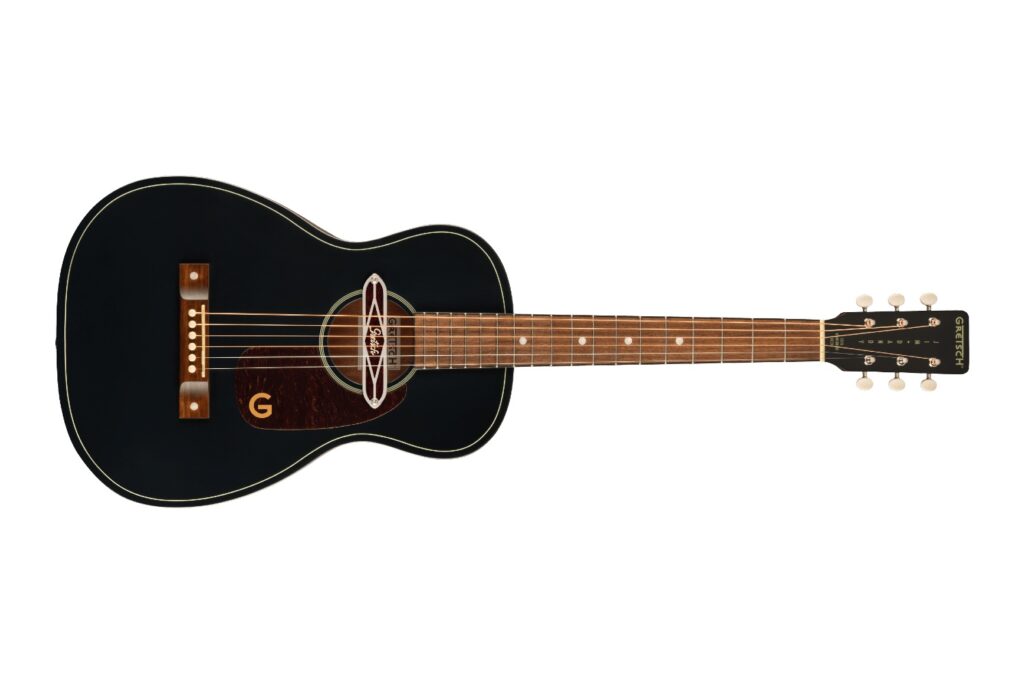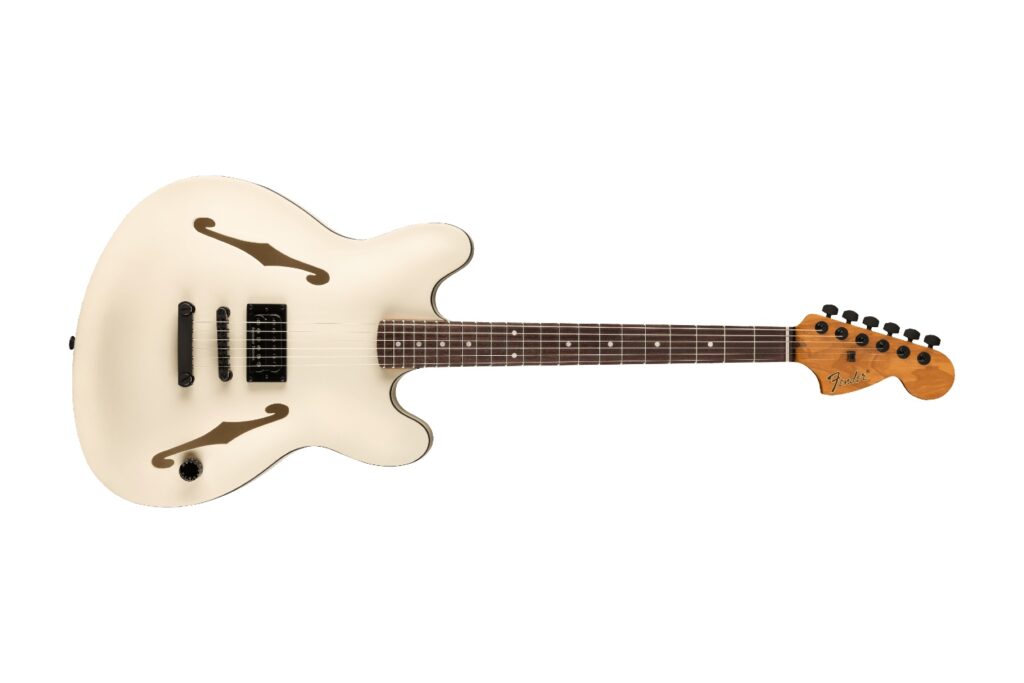Out of the box, players won’t be surprised by the solid diecast chassis – it’s a vintage aesthetic, with a sleek ocean blue anodised finish and four off-white knobs. The Carl Martin typeface neatly adorns the side and face, giving it an austere cool. The pedal runs via a bog-standard 9V power supply, which is fine, although the option for battery power would have been nice. The lack of battery does keep the Atlantic lightweight (340g) while its dimensions (60 x 115 x 50 mm) pack it tight enough to comfortably sit in a jacket pocket. Though the body itself is rugged, and the paint unlikely to scratch, the bypass switch often got a little loose with a heavy stomp.
All aesthetic misgivings are forgotten when the Atlantic is plugged in and a gut-busting and round sound unfurls. The analogue pedal has a remarkably transparent tone, one that feels more like the product of a restored Roland Chorus amplifier than mere FX. Carl Martin have included four controls, speed, depth, rate and level. The level control, unusual for a chorus pedal, is the most immediately practical improvement, offering a volume boost to nest the signal right in the mix. Regardless of your manipulation of the other settings, or even the addition of distortion on the wrong side of the FX chain, the control ensures a piercing clarity.
As per most chorus pedals, your depth and speed controls the amount and speed of the effect respectively. The rate function has a neat portioning of vibrato to dial in, widening the sound palette hugely. Turning the rate and depth knobs completely clockwise produces a full vibrato effect, offering an impressive psychedelic tinge without conjuring background hiss. Putting depth, rate and speed at one o’clock gives you a classic grunge-chorus, while easing back the depth and speed to 11 o’clock produced a cleaner, janglier tone. With the depth of the effect turned completely clockwise and the rate and speed midd led, I found the tone a little too crunchy if I wasn’t playing with an overdrive.
Paired with a Big Muff fuzz, the Atlantic performed well, combining the creamy sustain with its own modulation seamlessly. Playing up the fretboard, the fuzz’s scream was a little blunted, though it worked in favour of a warmer tone. Upon reflection, the Atlantic’s range matches the playing involved in atmospheric black metal surprisingly well, though it’s suited to practically any style.
Those searching for an affordable chorus pedal could skip the bare digital fare offered by competitors and head straight for the dynamic Atlantic Chorus. It’s designed for pedalboard economy and practicality, sealing the deal with an unusual degree of tonal control.







